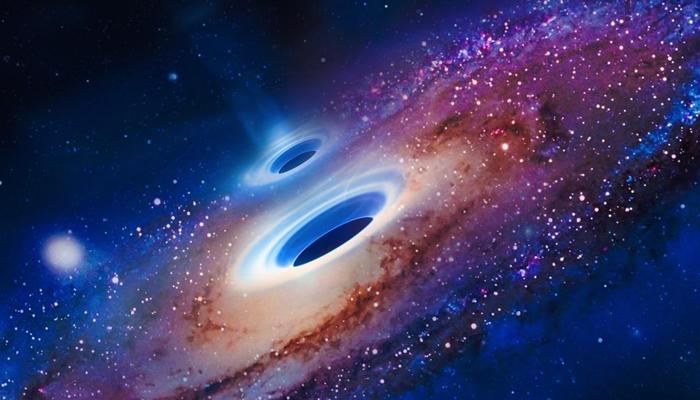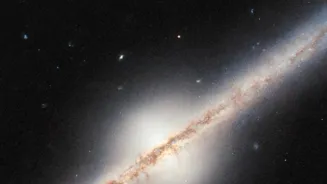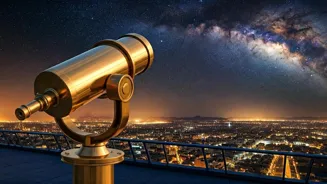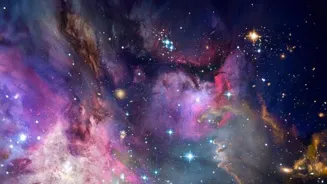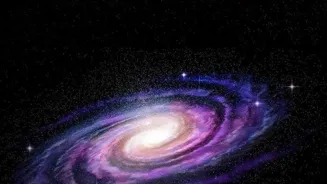Explore 10 mind-bending astrophysics concepts unraveling the mysteries of the cosmos. Prepare to be amazed!
Namaste, science enthusiasts! Buckle up, because we're about to embark on a journey through the
cosmos, exploring ten mind-bending astrophysics concepts that will leave you in awe of the universe.
Forget your daily chai for a moment and prepare to have your understanding of reality stretched beyond its limits!
Dark Matter: The Invisible Hand Guiding Galaxies
Imagine the universe as a grand cosmic dance, where galaxies twirl and sway in perfect harmony. But here's the twist: what if much of the orchestra, the very thing orchestrating their movements, is completely invisible? That's the enigma of dark matter.
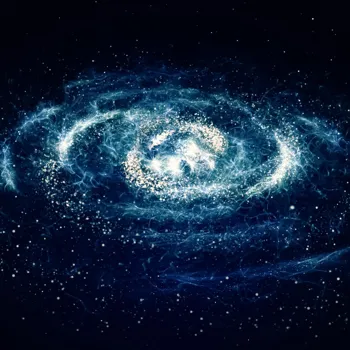
Scientists believe that around 85% of the universe's matter is made up of this mysterious substance, which doesn't interact with light, making it impossible to see directly. We only know it exists because of its gravitational effects on visible matter, like stars and galaxies.
Without dark matter, galaxies wouldn't have enough gravity to hold themselves together, flinging stars out into the intergalactic void. It's like a celestial glue, holding everything in place, even though we can't see it!
So next time you gaze up at the night sky, remember that there's a whole lot more out there than meets the eye– an invisible scaffolding shaping the cosmos as we know it!
Black Holes: Cosmic Vacuum Cleaners
Black holes are not just scary monsters lurking in the depths of space; they are actually extremely interesting objects where gravity is so intense that nothing, not even light, can escape its grasp.
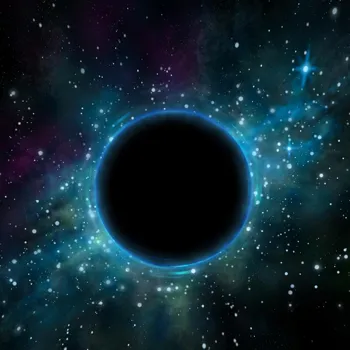
Formed from the collapse of massive stars at the end of their life cycle, these cosmic vacuum cleaners warp spacetime, creating a region from which there is no return.
Anything that gets too close to a black hole, be it a star, a planet, or even a stray photon, is inevitably sucked in and crushed into an infinitely small point called a singularity.
While black holes are often portrayed as destructive forces, they also play a crucial role in the evolution of galaxies, influencing the movement of stars and even triggering the formation of new ones.
Recent images, like the one of the black hole at the center of the Milky Way (Sagittarius A*), remind us that these cosmic giants are not just theoretical concepts but real, tangible entities shaping the universe around us.
Supernova: Stellar Fireworks Finale
Think of a supernova as the universe's biggest and brightest firework display. It marks the explosive death of a massive star, a cataclysmic event that can briefly outshine entire galaxies. Supernovae are not just visually spectacular, they are also essential for the creation of new elements.
During the supernova explosion, the intense heat and pressure forge heavy elements like gold, silver, and uranium, which are then scattered throughout the universe. These elements eventually become the building blocks for new stars, planets, and even life itself.
So, in a way, we are all made of stardust, the leftovers from ancient supernovae that exploded billions of years ago. A supernova is a reminder that even in destruction, there is creation and that the cycle of birth, death, and rebirth is a fundamental aspect of the cosmos.
Neutron Stars: Dense Remnants of Cosmic Giants
Imagine squeezing the entire mass of the Sun into a sphere the size of Delhi. That's essentially what a neutron star is: the incredibly dense remnant of a supernova explosion.
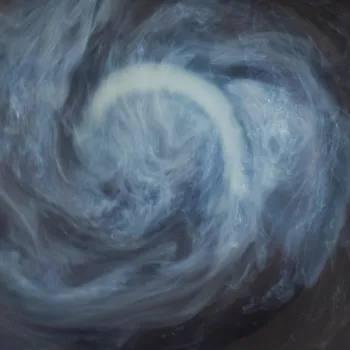
These stellar corpses are composed almost entirely of neutrons, packed together so tightly that a teaspoonful of neutron star material would weigh billions of tonnes on Earth.
Neutron stars possess some of the strongest magnetic fields in the universe, and some of them, known as pulsars, spin incredibly fast, emitting beams of radiation like cosmic lighthouses.
Scientists study neutron stars to understand the behavior of matter under extreme conditions, pushing the boundaries of our knowledge about the fundamental laws of physics.
They are also potential candidates for detecting gravitational waves, ripples in spacetime caused by accelerating massive objects.
Exoplanets: Worlds Beyond Our Solar System
For centuries, humans have wondered if we are alone in the universe. The discovery of exoplanets, planets orbiting stars other than our Sun, has revolutionized our understanding of planetary systems and has fueled the search for extraterrestrial life.
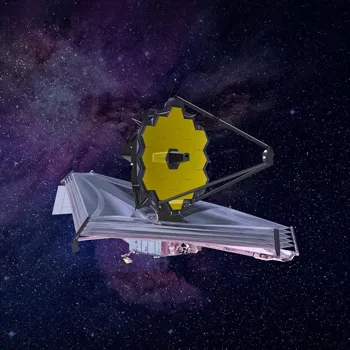
Today, we have discovered thousands of exoplanets, ranging from gas giants larger than Jupiter to rocky worlds potentially similar to Earth.
Some of these exoplanets reside in the habitable zone of their stars, where temperatures could be just right for liquid water to exist on their surface, raising the possibility of life.
Telescopes like the James Webb Space Telescope are now being used to study the atmospheres of exoplanets, searching for chemical signatures that could indicate the presence of biological activity.
The discovery of exoplanets has transformed the search for life from science fiction to a scientific endeavor, and the possibility of finding a second Earth is becoming increasingly real.
Gravitational Waves: Ripples in Spacetime
Einstein's theory of general relativity predicted the existence of gravitational waves, ripples in the fabric of spacetime caused by accelerating massive objects.
These waves, like ripples in a pond, propagate through the universe at the speed of light, carrying information about the events that created them. In 2015, scientists detected gravitational waves for the first time, confirming Einstein's prediction and opening a new window into the cosmos.
These waves were generated by the collision of two black holes, an event that happened billions of years ago. Since then, gravitational waves have been detected from other black hole mergers and neutron star collisions, providing new insights into these extreme cosmic events.
Gravitational wave astronomy is a rapidly developing field that promises to revolutionize our understanding of the universe, allowing us to study objects and phenomena that are invisible to traditional telescopes.
The Big Bang: The Birth of the Universe
The Big Bang theory is the prevailing cosmological model for the universe. It proposes that the universe began as an incredibly hot, dense point about 13.8 billion years ago and has been expanding and cooling ever since.
In the first moments after the Big Bang, the universe underwent a period of rapid expansion called inflation, which stretched the universe to its current size. As the universe cooled, protons, neutrons, and electrons formed, eventually combining to form atoms.
Gravity then caused these atoms to coalesce into stars and galaxies, giving rise to the universe we see today.
Evidence for the Big Bang comes from several sources, including the cosmic microwave background radiation, the afterglow of the Big Bang, and the abundance of light elements like hydrogen and helium in the universe.
Cosmic Microwave Background Radiation: Echoes of the Early Universe
The cosmic microwave background radiation (CMB) is the afterglow of the Big Bang, a faint, uniform glow of microwave radiation that permeates the entire universe.
It is the oldest light in the universe, emitted about 380,000 years after the Big Bang, when the universe had cooled enough for atoms to form. The CMB is not perfectly uniform; it has tiny temperature fluctuations that correspond to density variations in the early universe.
These density variations acted as seeds for the formation of galaxies and other large-scale structures. Scientists study the CMB to learn about the conditions in the early universe, including its age, composition, and geometry.
The CMB is like a cosmic fossil, providing a snapshot of the universe in its infancy.
The Multiverse: Are There Other Universes Out There?
Imagine that our universe is just one bubble in a vast cosmic ocean, surrounded by countless other universes, each with its own set of physical laws and constants.
This is the concept of the multiverse, a speculative idea that has captured the imaginations of scientists and science fiction writers alike.
There are several different versions of the multiverse theory, some suggesting that our universe is constantly branching off into new universes, while others propose that there are parallel universes existing alongside our own.
While there is no direct evidence for the multiverse, some physicists believe that it could explain certain mysteries about our universe, such as why the fundamental constants of nature are so finely tuned for life.
The Fermi Paradox: Where is Everybody?
Given the vastness of the universe and the fact that Earth is not special, one would expect that life should be common in the cosmos. So, why haven't we found any evidence of extraterrestrial civilizations?

This is the Fermi paradox, named after the physicist Enrico Fermi, who famously asked, "Where is everybody?" There are many possible explanations for the Fermi paradox. Perhaps life is rare, or perhaps extraterrestrial civilizations are too far away for us to detect them.
It is also possible that civilizations tend to destroy themselves before they can reach the point of interstellar travel, or that there are undiscovered laws of physics that prevent widespread colonization of the galaxy.
The Fermi paradox is a profound question that challenges our understanding of the universe and our place within it.
These are just a few of the incredible astrophysics concepts that are shaping our understanding of the universe.
As technology advances and telescopes become more and more powerful, we can expect even more mind-blowing discoveries in the years to come. Keep looking up, keep questioning, and never stop exploring the wonders of the cosmos!
The universe is expanding at a rate of about 73 kilometers per second per megaparsec. This means that for every 3.26 million light-years away a galaxy is, it’s receding from us 73 kilometers faster every second.
This measurement is known as the Hubble constant, and its precise value is still a topic of active research and debate. Different methods of measurement yield slightly differing values, which presents a puzzle for cosmologists.
Quantum entanglement is a phenomenon in which two or more particles become linked together in such a way that they share the same fate, no matter how far apart they are.
If you measure the state of one particle, you instantly know the state of the other, even if they are on opposite sides of the universe. This sounds like it might violate the speed of light, but it doesn't, because no information can be transmitted using entanglement.
The event horizon of a black hole is the boundary beyond which nothing can escape its gravitational pull. Once you cross the event horizon, you can never come back. The size of the event horizon depends on the mass of the black hole.
For a black hole with the mass of the Sun, the event horizon would be about 3 kilometers in radius. The most detailed images we have from space are like puzzles.
AI Generated Content. Glance/InMobi shall have no liability for the content
